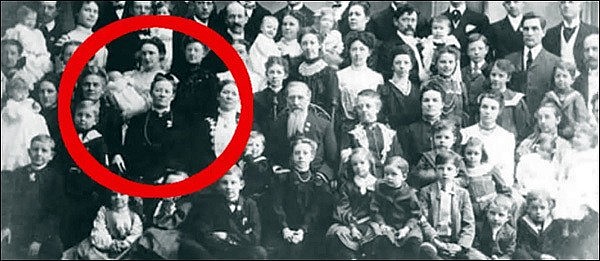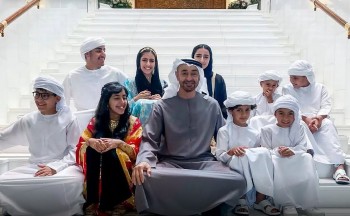Facts About The World's Most Fertile Woman With 69 Children
 |
| Facts About The World's Most Fertile Woman With 69 Children |
Who is the most fertle woman in the world's history?
Guinness World Records recorded Ms. Valentina Vassilyeva as the most fertile person in the world with 69 children. However, there is still a lot of controversy about this woman and what is the truth behind her fertility?
How many times did she give birth?
Ms. Valentina had 27 children over the course of 40 years, including 16 twins, 7 triplets, and 4 quadruplets for a total of 69.
Ms. Valentina Vassilyeva, who lived in Russia in the 18th century, was the world's most prolific mother. She was the first wife of Mr. Feodor Vassilyev, a farmer. Mr. Feodor Vassilyev has a second wife, according to Bright Side.
According to a Russian archival document, Valentina gave birth to twins 16 times, triplets 7 times, and quadruplets 4 times between 1725 and 1765. In 40 years, she gave birth 27 times and had 69 children.
Scientists have investigated this issue numerous times and do not believe it is true. An average pregnancy lasts 40 weeks. The more babies a pregnant lady has in her belly, the faster labor will begin. The scientists calculated the following: Sixteen sets of twins, each pregnant for 37 weeks. Seven triplets and four quadruplets were 32 and 30 weeks pregnant, respectively.
The total number of weeks for 27 pregnancies is 936 weeks. Ms. Valentina lost 18 weeks of her pregnancy, despite the fact that a year has 52 weeks. In principle, this is completely possible. However, there are still numerous elements to consider, which has caused scientists to debate for a long time.
This may seem ludicrous, but let's do the math. You're aware that the average pregnancy lasts approximately 40 weeks. However, if you have more than one fetus, labor will probably start sooner.
READ MORE: 15 Famous Celebrities Who Adopted Children
| According to BBC calculations, Ms. Valentina might have been pregnant with twins for around 37 weeks, triplets for 32 weeks, and quadruplets for 30 weeks. If you sum up all of the numbers above, the total is 936 weeks. A year contains 52 weeks, thus when divided, we get 18 years. This figure is very acceptable given Ms. Valentina's 40-year relationship with her ex-husband. |
Controversies among scientists
 |
Valentina is theoretically capable of becoming pregnant and giving birth to a high number of children. However, there are still many aspects to consider, forcing scientists to disagree and raise numerous questions.
First, medical history has documented a condition known as "multiple ovulation," which occurs when a woman releases more than one egg per menstrual cycle. This is not very prevalent in the world (approximately 5%-10% of menstrual cycles). If Valentina's account is correct, she is a "unique" example, as most ovulations produce more than one egg.
Furthermore, Valentina must be quite fortunate to have entirely escaped the risk of "vanishing twin syndrome". This event occurs when one of the twins gets absorbed by the placenta, another sibling, or even the mother's own body. This syndrome is rather frequent in multiple pregnancies, with a rate of approximately 21%-30%.
Second, pregnancy and labor are stressful for the female body, which is why the phrase "the door of birth is the door of death" exists. When two pregnancies are less than 18 months apart, there is a substantial chance of difficulties for both mother and baby. A woman's body does not have enough time to heal and rest.
Third, even with current medicine, twin and triplet pregnancies are difficult to survive. Meanwhile, poor medical circumstances, such as those found in rural Russia in the 18th century, increase the likelihood of risk. Furthermore, Mrs. Valentina is a farmer who is constantly working and caring for a large number of children. Only two of her 69 offspring died as children.
READ MORE: 4 Valuable Lessons for Raising Children That Parents Should Know
Evidence
Although it sounds ludicrous, there is actual evidence.
Many scientists continue to believe that this story does not exist, yet historical evidence contradicts them.
A record given to Moscow by the Nikolskiy monastery in February 1782 revealed that Valentina's husband, Feodor Vassilyev, had 82 confirmed living children from two marriages. His second wife also had 18 children, including six sets of twins and three sets of triplets. This list was first published in 1834 in the Saint Petersburg Panorama newspaper.
In 1783, Gentleman magazine published a story about Vassilyeva's case. The author, in particular, argues that the cause might be attributable to both husband and wife, or to the wife, but that in this situation, it is more likely to be due to the husband, because cases of twins and triplets are common among women. step-wife.
Another story in The Lancet magazine reported that the French Academy of Sciences attempted to grasp the situation and discovered Vassilyevs residing in Moscow, whose family got government help.
| Are these the most children born to one woman? Here's the Evidence As strange as Valentina Vassilyev's story may appear, a number of sources indicate that she had the most children born to a single woman. In addition to the monastic records given by Guinness World Records and the BBC, there are recent journalistic accounts of Vassilyev's 69 children. In 1783, The Gentleman's Magazine explored the assertion that Vassilyev's husband, Feodor, had not only 69 children with her, but also 18 more with his second wife. "In an original letter now before me," the magazine writer noted, "dated St Petersburg, August 13, 1782, O. S. Feodor Wassilief [sic], aged 75, a peasant, said to be now alive and in perfect health, in the Government of Moscow, has had by his first wife 4 x 4 = 16, 7 x 3 = 21, 16 x 2 = 32, 27 births, 69 children." By his second wife: 6 x 2 = 12, 2 x 3 = 6, 8 births, and 18 children." The article went on to say: "The above relation, however astonishing, may be depended upon, as it came directly from an English merchant at St. Petersburg to his relatives in England, who added that the peasant was to be introduced to the Empress." A second-hand story from an English merchant may appear doubtful under today's evidence standards. However, many other contemporaneous sources also describe Vassilyev's several offspring. "In the day of 27 February 1782, the list from Nikolskiy monastery came to Moscow containing the information that a peasant of the Shuya district, Feodor Vassilyev, married twice, had 87 children," the writer said in a book published in 1834. "During 27 confinements, his first wife gave birth to 16 pairs of twins, seven sets of triplets, and four sets of quadruplets. His second wife bore six pairs of twins and two sets of triplets over the course of eight confinements. F. Vassilyev was 75 at the time, and 82 of his children were still alive. However, while Feodor's name was associated with these stories, Valentina was frequently nameless. Indeed, it is unclear what her first name was. Despite the sources for her pregnancies, many people believe it is impossible for a single woman to produce 69 children. So, is it? |
Other famous fertile women in the world
While Valentina Vassilyeva's astonishing story has attracted the public's attention, there have been other famous incidents of mothers giving birth to an unusually large number of children.
Leontina Albina Espinoza, often known as "La Quintrala," was a Chilean woman who lived in the seventeenth century. According to historical archives, she had 64 children in her lifetime. Espinoza's narrative, like Vassilyeva's, has piqued historians' interest, albeit the veracity of her report is still being studied.
Furthermore, in the twentieth century, a woman named Leontina de Castro Feitosa from Brazil was reported to have 26 sets of twins, 4 sets of triplets, and 3 sets of quadruplets, for a total of 62 offspring. These significant cases illustrate several historical examples of women having an unusually large number of children.
Conclusion
In short, historical legends of women with a large number of children, such as Valentina Vassilyeva, continue to captivate our imagination. While the legitimacy of individual records remains unclear, these stories demonstrate women's tenacity and the intricacies of human birthing throughout history. As we investigate these unusual cases, let us remember the ongoing mysteries of historical birth records and the significance of comprehending the past within its specific historical context.
 Little-Known Facts About Guyana - World's Fastest-Growing Economy Little-Known Facts About Guyana - World's Fastest-Growing Economy Let's explore interesting, little-known facts about Guyana - The country in South America has achieved the fastest economic growth rate in the world over the ... |
 Facts About UAE’s Al-Nahyan - the World’s Richest Family with $305 Billion Facts About UAE’s Al-Nahyan - the World’s Richest Family with $305 Billion The Al-Nahyan family is currently the richest family in the world, surpassing numerous wealthy families like the Walton or Rockefeller families. |
 Facts About Nanodrones or Nanobots That Can Treat Cancer Facts About Nanodrones or Nanobots That Can Treat Cancer Researchers have effectively created "drones" the size of nanoparticles that can be introduced into cells to eradicate cancer. To learn all the specifics, read the ... |
























